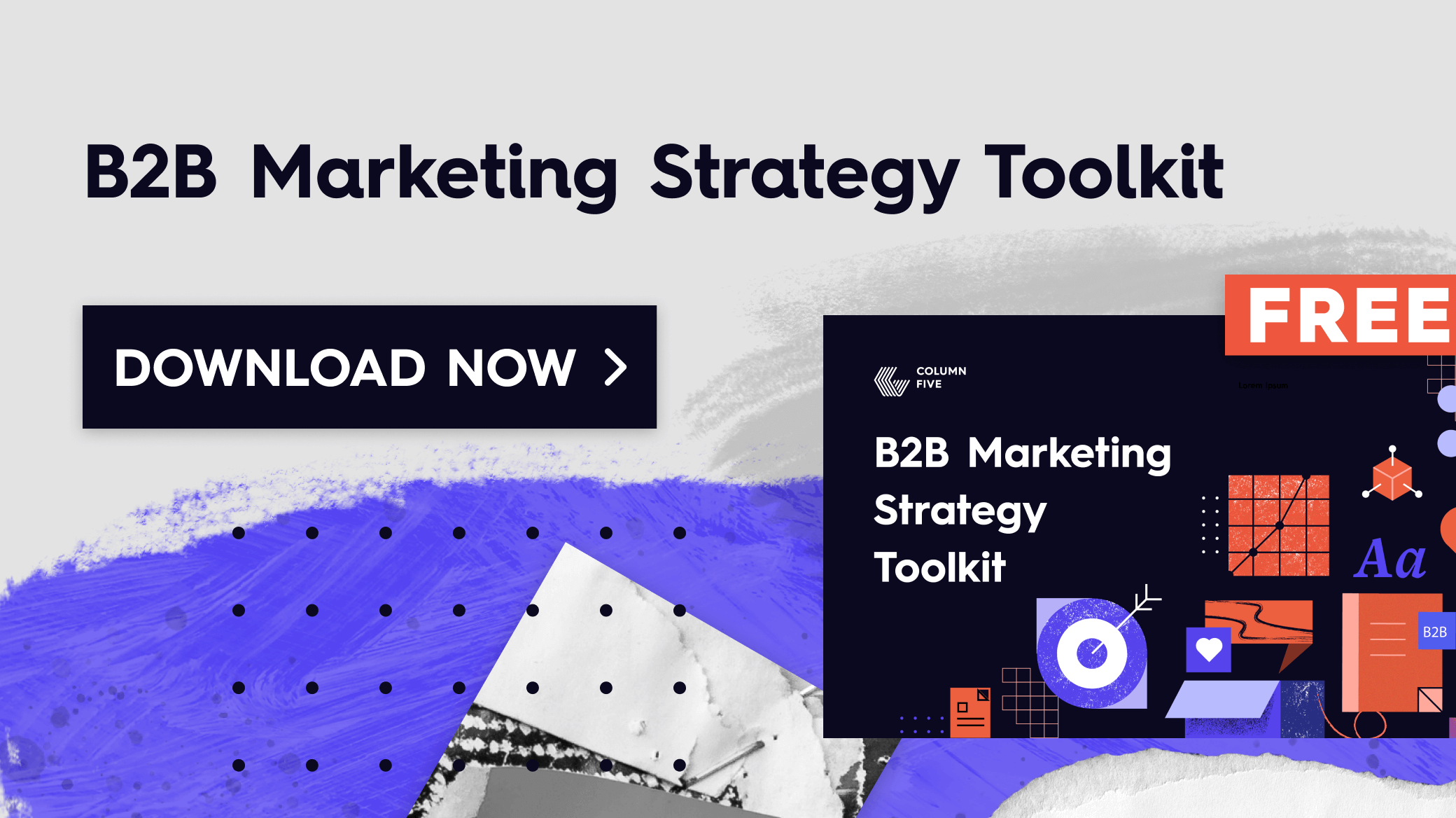B2B marketing isn’t easy, and in the tech world, it’s increasingly challenging. From crowded marketplaces to internal misalignment, content marketers are facing a range of issues that affect their day-to-day work. This is increasingly clear in the Content Marketing Institute’s 2022 Technology Content Marketing report, which explores the state of tech marketing in everything from strategy and content creation to distribution and metrics. Above all, the report highlights the biggest challenges tech marketers are facing—and, boy, do they sound familiar. Having helped B2B brands of all sizes over the last decade, we are more than familiar with these challenges. Fortunately, we also know how to tackle them.

How to Tackle the Top 5 Challenges in Technology Marketing
According to the Content Marketing Institute, the top 5 biggest challenges tech marketers face include:
- Creating content that appeals to multi-level roles within the target audience
- Accessing subject matter experts to create content
- Internal communication between teams/silos
- Creating valuable content instead of sales-oriented content
- Differentiating products/services from the competition
If these sound familiar to you, don’t worry. It just means that 1) You aren’t alone. 2) You’re in the right place. Here, we’ll break down these challenges and give you our best tips, tools, and resources to tackle them effectively.
Problem 1: Creating content that appeals to multi-level roles within the target audience.
If you don’t understand who your target audience is, what they care about, or how to make content that is relevant to them, your content won’t succeed. Of course, considering that the average B2B purchase requires multiple stakeholders (according to Gartner research, it can include up to 20), you need to know how to tailor your messaging to multiple audiences.
The fix: Fortunately, the more strategically you approach content creation, the easier it is to create content that makes an impact.
- Create personas. These will help you understand your audience’s unique needs, wants, challenges, desires, etc. With this clarity, you can craft content that speaks directly to different roles within the same organization. Start with our free template to create personas, and try these tips to find your target audience.
- Think in campaigns. A good marketing campaign tells a cohesive story, but it provides different entry points into that story, tailored for each specific audience. When trying to reach different groups, think of their unique needs/interests, and find an emotional hook that speaks to those needs. Different content may take different forms, too. Your higher-level thought leadership for C-level decision-makers may do well in an industry publication, while a free e-book on your website may be the perfect resource for mid-level decision-makers. Use our free campaign template to brainstorm campaign ideas across touchpoints.
- Nail your messaging. Regardless of who you’re speaking to, telling a consistent story is crucial. Find out how to create brand messaging that resonates and reinforces your brand story.
You should also strive for a healthy content mix to create a seamless path to purchase. Find out what 5 types of B2B content you should be creating.
Problem 2: Accessing subject matter experts to create content.
62% of technology marketers say their organization outsources at least one content marketing activity.
—Content Marketing Institute
Tech can be highly specialized, so you need content creators that can speak confidently and authoritatively on a subject matter. But those voices are not always easy to find. (And, in fact, we find that sometimes the loudest voices in marketing have the least interesting things to say.)
Still, you need experts to help you create the rich, valuable content your audience deserves.
The fix: Luckily, there are many ways to tap into the expertise inside and outside your company’s walls.
- Turn your team into content creators. Who knows about your field more than the people actually working in it? Go straight to the source by tapping the people in your company to generate interesting content. You can also pair a writer with these experts to help expand their ideas, shape a narrative, and turn it into a compelling piece. Luckily, things like Q&As, guest columns, or team roundups are relatively low-lift ways to generate a steady stream of content.
- Reach out to experts in your field. Interviews are one of the best ways to share knowledge, gather insights, and expand your reach. Outside of your company, turn to industry peers and experts to conduct an interesting and relevant interview. This can be a formal interview or a casual conversation (either format is easier than ever, thanks to tools like Zoom).
- Use an agency. A good content agency has a talented network of creators across many fields. If you’re on the hunt, see our 5 tips to outsource tech marketing.
Note: If you do end up using an agency, follow these tips to make your collaboration go as smoothly as possible.
Problem 3: Internal communication between teams/silos.
Behind-the-scenes frictions are often one of the biggest problems in a marketing operation that is struggling. (It’s why, along with strategy and technology, your organizational structure is so crucial to a mature marketing organization.)
The fix: When teams become disjointed, it’s time to focus on clarity and alignment.
- Know your goals. We find that a lack of clarity around goals is usually the root of all misalignment, miscommunication, and frustration. If people aren’t on the same page, aren’t clear on who owns what, or aren’t on board with what you’re trying to achieve, your efforts are doomed. Find out how to document your goals to keep everyone aligned.
- Share and tell. To really collaborate effectively, colleagues need to understand each other’s work and feel invested in it. If it doesn’t feel like you’re on the same team, or you can’t see how one department’s work influences another, you need more open lines of communication. Regular meetings to share your wins and in-progress work can go a long way toward breaking down walls.
Note: Understanding the way different people on your team think and communicate can also go a long way toward creating healthy team dynamics. Find out about the different types of creative thinkers and how to work best with each.
Problem 4: Creating valuable content instead of sales-oriented content.
We sure do know about this one. This is the cardinal sin of content marketing, and yet it is the most common thing we see in the wild. Marketers are so focused on what they want to say about their brand they forget to think about what their audience actually wants and needs to hear. Again, content marketing is meant to start a conversation, so you shouldn’t be selling off the bat.
The fix: Ultimately, you need to have a clear understanding about what marketing’s role is—and how you are going to do it for your particular audience.
- Understand the difference between marketing and sales. No, really. In too many organizations, sales bleeds into marketing and muddles the message. Understand what the true function of marketing is, then can you learn to bridge marketing and sales in your buyer’s journey.
- Use empathy. Put yourself in your audience’s shoes and you will be able to connect with them much more effectively. The secret to doing that? Employ empathy. Think about their fears, worries, frustrations, desires, hopes, and dreams—then create content that speaks to these points. If you’re not sure what empathetic content marketing looks like, here are 15 brands that do it well.
- Vet your ideas. To ensure your audience will actually care about your content, you need to do more than brainstorm ideas—you need to carefully analyze each idea to decide whether or not it will provide value. To do that, ask these 5 questions every time you come up with a new idea, and try these tips to create value-centric content.
See more tips to create interesting and engaging B2B content.
Problem 5: Differentiating products/services from the competition.
60% of technology marketers said they stand out by differentiating their content.
—Content Marketing Institute
As the marketplace becomes more crowded, differentiation becomes increasingly challenging. (In fact, in these conditions, your product/service matters much less than your actual brand.) But with so many brands focused on keeping up with the Joneses, everyone is looking like a copy…of a copy…of a copy. This is why so much B2B marketing is, frankly, terrible. But it’s also why you have a huge opportunity to steal the spotlight.
The fix: If you want to stand out in the crowd, start with a critical eye.
- Do a content audit. Before you even build a content strategy, we always recommend doing a content audit of your brand’s content, as well as your competitors’ content. This helps you spot your strengths, weaknesses, and opportunities to zig where they zag. Start with our step-by-step guide to conduct a content audit.
- Create a strong brand identity. The way you look and speak has a huge effect on how your brand is perceived, and it will help you stand out from the crowd. For example, if your whole industry uses blue branding, you’ll turn heads with purple. If your competitors are dry and pretentious, adopting a down-to-earth voice will help people feel more connected to you. Good content marketing is about building a relationship with your audience over time. The stronger your brand identity (and the more consistent you are), the more you will build a community. See our tips to find your brand voice and personality, build a visual identity, and create a style guide that makes it easy to keep your content on-brand.
Ultimately, remember that brand-building is the key to longevity. To make that a priority, find out how to build a brand team that will grow your business.
The Secret to Tech Marketing Success: Strong Strategy
No matter your product or service, if you want to be a successful tech marketer, you need a strategy-led organization. With a clear and focused plan, you can create measurable results, increase your impact, and work more effectively at every level. To make sure your team is on the right track, use our free content strategy toolkit to build the right strategy for your brand. And if you need a little outside help, feel free to start your hunt with us. Find out what it’s like to work with us on a content strategy, or reach out directly. We’d love to help you find and keep your audience.





